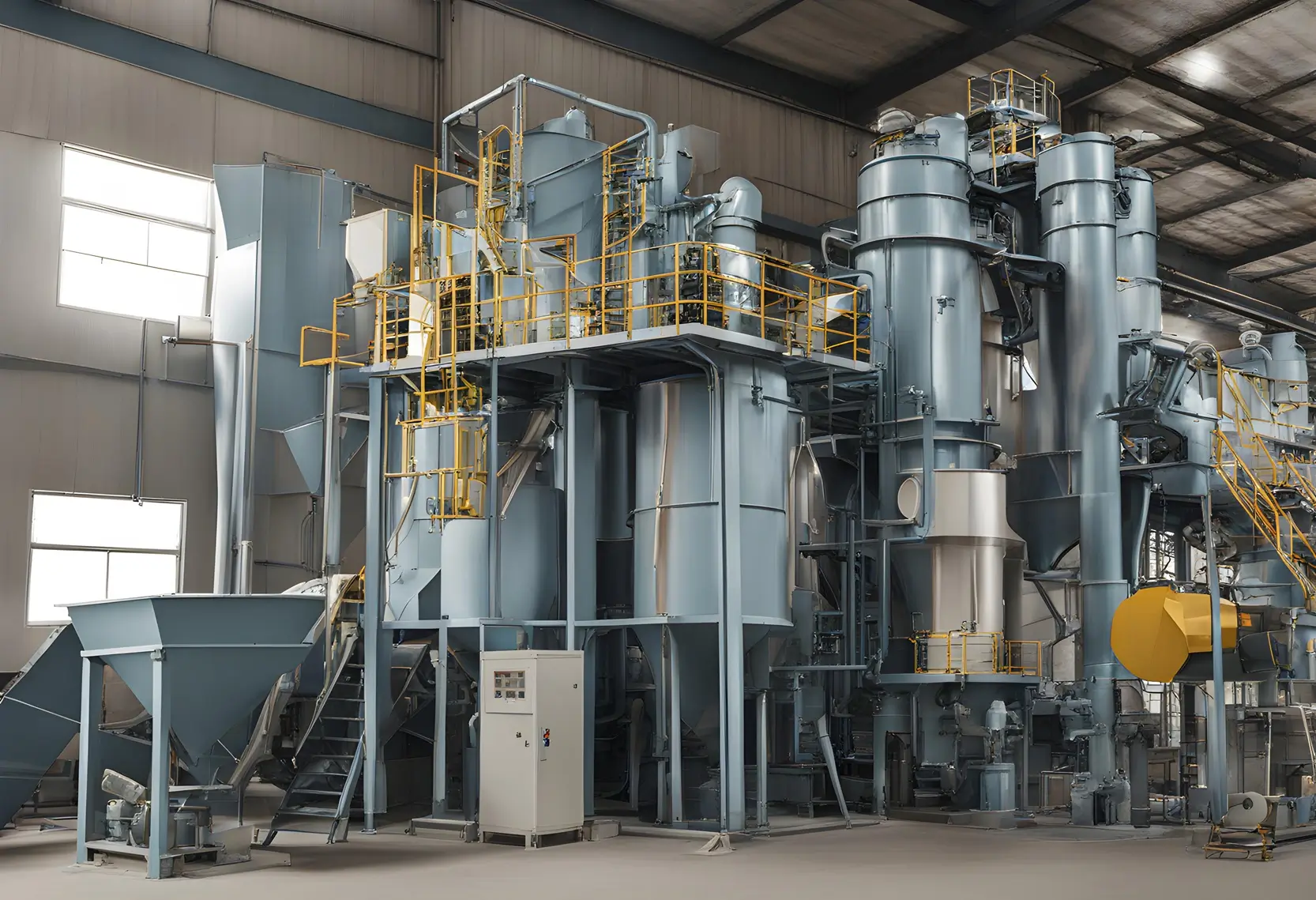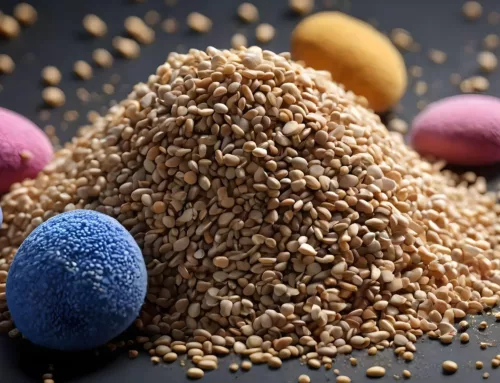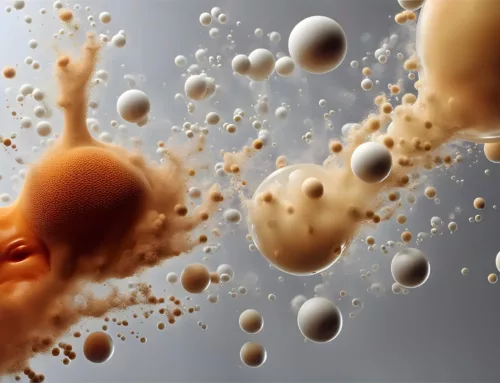
Designing industrial powder processing plants is an intricate endeavor, demanding a deep understanding of both engineering and chemistry. The collaboration between engineers and chemists is vital for designing efficient and sustainable systems. This intricate process spans project assessment, feasibility, equipment selection, safety, compliance, automation, environmental factors, scaling up, collaboration, communication, testing, optimization, and the interplay of engineering and chemistry in industrial powder processing.
Industrial powder processing plants are integral to a wide range of industries, including, metallurgy, pharmaceuticals, food processing, feeds, materials manufacturing, and many others. The importance of these plants lies in their ability to efficiently process raw materials into valuable products. The collaborative efforts of engineers and chemists are crucial in designing these plants to ensure optimal performance and sustainability.
Assessment and Feasibility
To initiate an industrial powder processing plant successfully, a thorough feasibility study is imperative to assess project viability. Factors like raw material availability, market demand, location, and regulatory compliance play a pivotal role in this determination. This critical study, essential for project success, evaluates technical, market, and regulatory aspects. The technical feasibility assessment looks into organizational resources, production capacity, and technical requirements. Concurrently, market analysis investigates target markets, customer preferences, and competition. Ensuring adherence to laws and permits, and regulatory compliance is a vital component.
Beyond technical considerations, the study incorporates a market analysis to gauge potential success. This includes assessing the target market, customer preferences, and overall demand. Competition analysis is also conducted to identify potential risks and opportunities, streamlining the project initiation process and regulatory compliance. Evaluating and adhering to relevant laws and regulations is an inevitable hurdle that is critical for operations to start.
A risk assessment identifies potential risks and develops strategies for mitigation, such as assessing revenue versus operating costs. Feasibility studies are vital in project management, identifying challenges, assessing potential success, and ensuring technical and legal feasibility.
Plant design, setup, and operations feasibility demonstrate technical and economic viability for powder processing, addressing challenges like drying methods, logistics, raw material supply, market fluctuations, and more. The significance of feasibility studies in evaluating technical, economic, and market aspects becomes apparent when facing challenges in industrial powder processing plants. These studies play a crucial role in identifying challenges, assessing technical and market feasibility, and ensuring compliance, ultimately contributing to the overall success of the project.
Process Design
The process design phase looks into the specific requirements of a powder processing plant, meticulously selecting equipment tailored to the characteristics of the powders. Balancing between efficiency, cost-effectiveness, and possible environmental impacts.
For example in powder metallurgy, the four main processes for powder production include solid-state reduction, atomization, electrolysis, and chemical methods. Material selection is the initial step in the powder metal process, leading to compaction, sintering, and if needed, secondary operations or heat treatment. Considerations for powder metallurgy design include net metal shaping, compaction ratios, cost efficiency, part wall thickness, manufacturing capabilities, innovative metal powders, edging, and tooling lifetime to name a few. The primary advantage is the low-cost process, achieved by using shapes that eliminate the need for follow-up machining.
Shifting to the pharmaceutical industry. Tablet production introduces other key processes such as wet granulation, dry granulation, and direct compression. The tablet production line intricately involves sieving, blending, milling, drying, granule forming, lubrication, tablet compression, and blister packaging. In the meticulous design of a pharmaceutical tablet processing plant, emphasis is placed on the careful selection of materials aligning with rigorous regulatory standards. Structural components commonly employ stainless steel, particularly 316L, favored for its corrosion resistance and ease of cleaning. Pneumatic systems also utilize stainless steel components, ensuring both durability and contamination prevention. This deliberate choice of materials serves the dual purpose of maintaining a hygienic environment and preventing any undesired interaction between the materials and the pharmaceutical products. Designers consistently prioritize materials that adhere to Good Manufacturing Practices (GMP) to uphold the pinnacle of quality in tablet production processes.
Equipment Selection
Plant designers and engineers shoulder the crucial responsibility of coordinating a well-matched array of equipment in industrial facilities. Beyond technicalities, their role involves navigating space constraints, optimizing energy efficiency, and addressing environmental impact. Choices in machinery and design wield substantial influence over overall efficiency and sustainability. Mills, vital for particle size reduction, are scrutinized for factors like hardness, feed size, and required fineness. Mixers, essential for uniform blends, are evaluated for mixing speed, type, and efficiency. Classifiers, key for particle separation, demand consideration based on particle size distribution and efficiency criteria. In the ever-evolving equipment landscape, these professionals seamlessly integrate cutting-edge technologies into plant design, shaping its intricacies and operational dynamics. In tablet manufacturing, equipment like granulators, mixing tools, drying machinery, and coating systems play pivotal roles. Tablets, composed of active substances and excipients in powder form, undergo compaction. Excipients such as diluents, binders, disintegrants, lubricants, sweeteners, flavors, and polymer coatings enhance tablet properties, contributing to their overall effectiveness and quality. Without proper plant design, achieving or maintaining this intricate process could prove to be highly challenging or even unattainable.
Automation and Control Systems
In the development of a powder processing plant, automation, and control systems play a crucial role in streamlining operations, ensuring uniform quality, and optimizing efficiency. Central to these systems are advanced control technologies, including programmable logic controllers (PLC) and human-machine interface (HMI), facilitating the automation and optimization of various processes. Key technical aspects in powder processing plant control technologies involve automated systems like Process Control Systems. These systems are vital for successful sanitary powder handling, utilizing advanced PLC and HMI technologies to oversee crucial aspects such as materials handling, mixing & blending, process systems, automatic weighing, batching, data acquisition, report generation, recipe management, and compliance with federal regulations.
During the development and design phase, tasks include creating process & instrument diagrams (P&ID), motor lists, I/O lists, performance specifications, electrical control schematics, architecture definition, communication architecture, panel layout, and a bill of materials. Standardized programming is implemented for future control modifications and troubleshooting, covering PLC/HMI programming, alarming and logging, data historian construction, material tracking, scope packages, and remote monitoring. Rigorous testing and simulation, including factory quality control, simulation testing, field testing for network communication, I/O verification, program sequence confirmation, and overall process functionality, ensure the quality and functionality of the systems. Panel Building involves designing custom panels in collaboration with UL-certified panel shops, specializing in the fabrication and assembly of custom electrical control panels tailored to the specific requirements of the control systems.
The successful implementation of these control technologies resonates across diverse industries, as showcased by companies excelling in powder handling equipment control systems. Notable examples include Siemens, Rockwell, ABB, and many others.
Siemens for instance is renowned for delivering cutting-edge control technologies, Siemens frequently contributes to the realm of automation and control systems in various industrial processes. Rockwell Automation: Positioned as a global leader in industrial automation and information, Rockwell Automation specializes in providing solutions such as programmable logic controllers (PLC) and human-machine interface (HMI) systems. Another multinational powerhouse, ABB, actively engages in the fields of robotics, power, heavy electrical equipment, and automation technology, further underscoring the success of control technologies in powder processing plants.
Scalability
In the world of competition, an integral aspect is scalability, a phenomenon deeply embedded in the human economic paradigm driven by the relentless pursuit of growth and the continuous need for expansion. When addressing powder processing plants, scalability becomes synonymous with the plant’s ability to accommodate future expansion and adapt to evolving production requirements. Incorporating scalability into the design and operation of these plants is not just a consideration but a fundamental necessity for ensuring long-term sustainability.
Choosing the right method for expanding production is important. In-line operations are usually easier to scale up than batch processes.
It’s important to maintain product quality and manage price fluctuations. Focus on geometric similarity and keep the total number of revolutions constant during scaling up.
Several industry leaders, including DORST Technologies, FEECO International, Hosokawa Micron Powder Systems, and GEA Group, offer comprehensive feasibility studies for powder processing plants. These studies encompass critical aspects such as process design, equipment selection, project management, and the initial steps in new product development.
Delicate Balance
In the domain of powder technology plant design, success hinges on a myriad of factors, and feasibility emerges as the central element. Whether a venture flourishes or falters, exhaustive efforts to uncover both weaknesses and strengths are imperative. The meticulous exploration of these facets becomes the compass steering the course of any endeavor. Feasibility, the guiding light in this pursuit, demands unwavering dedication to unearth potential pitfalls and opportunities. In the dynamic landscape of plant design, acknowledging the delicate balance between success and challenges is paramount, echoing the resilience required to navigate the intricate path of technological progress.




